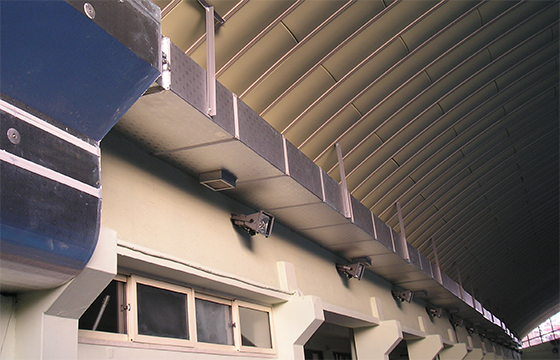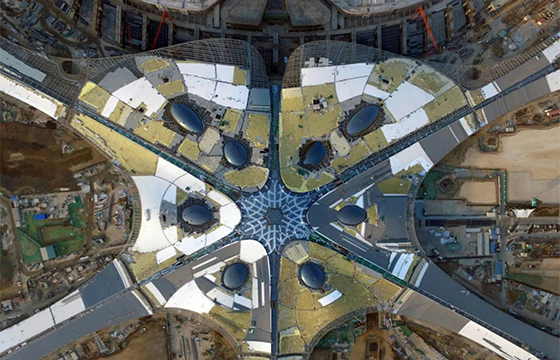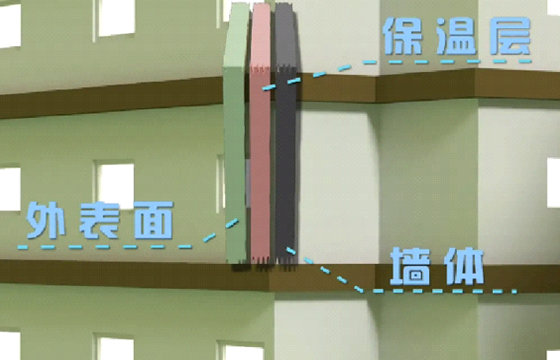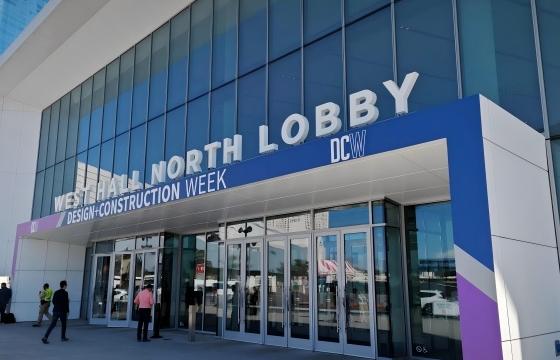Chongqing materials industry carbon peak plan:—— involving rock wool, thermal insulation and decorative integrated panels and aerogel, etc.
2024-10-15
The material industries such as steel, nonferrous metals, and building materials are important basic industries for national economic and social development, important supports for high-quality development of the manufacturing industry, and key industries for energy consumption and carbon emissions in the industrial sector. In order to thoroughly implement the major strategic decisions and deployments of the CPC Central Committee and the State Council on carbon peak and carbon neutrality, and to do a good job in the carbon peak of the material industry in our city, this implementation plan is formulated in accordance with the "Carbon Peak Implementation Plan for the Building Materials Industry" issued by the Ministry of Industry and Information Technology and other four departments, the "Carbon Peak Implementation Plan for the Nonferrous Metals Industry" issued by the Ministry of Industry and Information Technology and other three departments, and the "Carbon Peak Implementation Plan for the Industrial Sector in Chongqing" issued by the Municipal Economic and Information Commission and other three departments. The relevant requirements are hereby formulated and will be valid until 2030.
1. Guiding ideology
Guided by Xi Jinping Thought on Socialism with Chinese Characteristics for a New Era, we will fully implement the spirit of the 20th CPC National Congress, thoroughly implement Xi Jinping's Thought on Ecological Civilization and the spirit of General Secretary Xi Jinping's series of important instructions and instructions to Chongqing, and based on the new development stage, fully, accurately and comprehensively implement the new development concept, actively integrate into and serve the new development pattern, adhere to the principle of seeking progress while maintaining stability, promote stability through progress, and build before breaking, strengthen the concept of system, coordinate supply guarantee, green and low-carbon, resource security and industry development, optimize production capacity, adjust industrial structure, strengthen technology energy conservation and carbon reduction, promote clean energy substitution, and build a green manufacturing system, strive to improve the adaptability and effectiveness of supply and demand, accelerate the construction of a green and low-carbon development system, and achieve synergy and efficiency while ensuring the realization of the carbon peak target as scheduled.
2. Main objectives
During the "14th Five-Year Plan" period, the industrial structure of the city's steel, non-ferrous metals and building materials will be significantly optimized, energy-saving and low-carbon technologies in the industry will continue to be promoted, the energy consumption and carbon emission intensity of key products per unit will be further reduced, and the comprehensive energy consumption level of cement clinker per unit product will be reduced by more than 3%. The proportion of production capacity above the energy efficiency benchmark level in key areas such as ironmaking, steelmaking, ferroalloy smelting, aluminum smelting, cement manufacturing, flat glass, architectural ceramic products, and sanitary ceramic products reached 30%.
During the 15th Five-Year Plan period, the energy consumption structure of the city's steel, non-ferrous metals, and building materials industries improved significantly, and the overall energy efficiency level of key industries continued to improve. On the basis of achieving carbon peak in the industrial field, carbon neutrality capabilities were strengthened to ensure that the steel, non-ferrous metals, and building materials industries achieve carbon peak before 2030.
III. Implementation Path
(I) Steel.
1. Reasonably control steel production capacity. Implement relevant regulations such as capacity replacement and project filing, environmental impact assessment, and energy-saving assessment review, strengthen energy consumption, pollutant emissions and other constraint mechanisms, and reasonably control steel production capacity (among which, the annual production capacity of hot-rolled bars and wires for construction shall not exceed 8 million tons in principle). Resolutely crack down on illegal and irregular production and construction in the steel industry, strictly prohibit illegal new production capacity, and strictly prevent the resurgence of "underground steel". (Municipal Economic and Information Commission, Municipal Development and Reform Commission, Municipal Ecological Environment Bureau, Municipal Market Supervision Bureau, and Municipal Emergency Management Bureau are responsible for their respective duties)
2. Continue to promote upgrading. Encourage advantageous enterprises to implement cross-regional and cross-ownership mergers and reorganizations to optimize the allocation of production resources and the spatial layout of the industry. Actively promote the development of short-process steelmaking, encourage long-process steel mills to develop electric furnace short-process steelmaking, and improve the local consumption level of scrap steel. Support steel companies to target the upgrading of downstream industries and the development direction of strategic emerging industries, focus on the development of high-quality stainless steel, high-quality steel, special alloy steel for high-end equipment, steel for core basic parts and other steel materials, enhance the research and development of high-end steel materials and independent controllable production capabilities, and improve the strategic guarantee level of localization of key steel materials. (Municipal Economic and Information Commission and Municipal Development and Reform Commission are responsible for their respective duties)
3. Actively promote green and low-carbon technologies. In the field of process flow, promote enterprises to deepen the application of hot charging and hot delivery, and ultra-thin strips, and encourage enterprises to carry out low-carbon technology research and development such as headless rolling, high-proportion pellet smelting, blast furnace full oxygen smelting, oxygen-enriched combustion, and hydrogen energy metallurgy. Support enterprises to carry out research and innovation activities in cutting-edge technology fields around biomass carbon metallurgy, coordinated treatment of carbon dioxide and pollutants in steel flue gas, and utilization of low-quality exhaust steam and waste heat resources in steel processes. (Municipal Economic and Information Commission, Municipal Development and Reform Commission, Municipal Ecological Environment Bureau, and Municipal Science and Technology Bureau are responsible for their respective duties)
4. Build a circular economy industrial chain. Improve the scrap steel recycling, disassembly, processing, classification, and distribution system, encourage in-depth cooperation between scrap steel supply enterprises and steel utilization enterprises, promote the effective connection of the scrap steel "recycling-processing-utilization" industrial chain, and increase the local utilization of scrap steel. Support enterprises to develop steel kilns to coordinate the treatment of social waste technology, reduce the pressure and cost of social waste treatment, and reduce pollutant and carbon dioxide emissions. Give full play to the energy processing and transformation function of the steel production process, promote the upstream and downstream to build an energy industry chain with steel production as the core, realize the coordinated optimization of regional energy and environmental resources, create green and low-carbon factories, and establish a green and low-carbon park around the steel industry. (Municipal Economic and Information Commission, Municipal Development and Reform Commission, Municipal Ecological Environment Bureau, and Municipal Commerce Commission are responsible for their respective duties)
(II) Nonferrous metals.
1. Optimize production capacity scale. Strictly implement the electrolytic aluminum capacity replacement policy, guide the orderly development of the electrolytic aluminum industry, and consolidate the upstream foundation of the industry. Crack down on illegal additions, fraud and other behaviors in accordance with laws and regulations. Encourage mergers and reorganizations between enterprises to achieve effective allocation of industry resources and further optimize the layout. (Municipal Economic and Information Commission, Municipal Development and Reform Commission, Municipal Ecological Environment Bureau, Municipal Emergency Management Bureau are responsible for their respective duties)
2. Improve the overall efficiency of the industry. Strengthen demand-side management, face the needs of industrial upgrading and economic construction, promote enterprises to accelerate structural adjustment and new product development, expand effective supply, and improve the level of security. Focus on promoting the extension of non-ferrous metals to advanced alloys and other chains, promote the formation of a higher level of dynamic balance between supply and demand, and improve the overall efficiency of the industry. Driven by the development needs of advanced non-ferrous alloys, actively cultivate enterprises in the field of recycled metals such as recycled aluminum and recycled copper, increase the supply of high-quality raw materials, and promote the standardization of the comprehensive recovery and recycling of non-ferrous metal resources. (Municipal Economic and Information Commission, Municipal Development and Reform Commission, Municipal Commerce Commission are responsible for their respective duties)
3. Strengthen technical leadership. Promote enterprises to use advanced energy-saving processes to carry out technical transformation, and focus on promoting efficient and stable energy-saving and emission reduction technologies. Support enterprises to strengthen the research and development and application of technology and equipment in the fields of pre-treatment, smelting, energy conservation and environmental protection of waste non-ferrous metals and secondary resources, and strengthen the quality process control of recycled non-ferrous metal products. Support enterprises to carry out the research and development and application of new technologies and processes for comprehensive recovery and recycling of non-ferrous metal resources, and strengthen grade-keeping recycling. Encourage enterprises to explore and summarize their own process characteristics and production conditions, optimize processes for key energy-consuming processes, dynamically optimize and adjust process parameters, and ensure that production equipment and production processes reach the best state. (Municipal Economic and Information Commission, Municipal Development and Reform Commission, Municipal Ecological Environment Bureau, Municipal Science and Technology Bureau are responsible for their respective duties)
(III) Building materials.
1. Strengthen total control. Strictly implement the capacity replacement policy of cement and flat glass industries, resolutely curb illegal new capacity, and in principle no longer increase independent cement grinding, aerated concrete, and primary sintered brick production capacity. Implement the work requirements of normalized staggered production of cement, strengthen the linkage between Sichuan and Chongqing regions, improve the differentiated staggered production policy in Sichuan and Chongqing, strengthen the staggered production liaison mechanism, urge the competent departments in various regions to carry out staggered production supervision and inspection, optimize the implementation mode of cement staggered production, and explore production based on scheduling and carbon. Support social organizations such as the Chongqing Wall Materials Industry Association to formulate and revise industry rules and group standards to promote the green and low-carbon development of the industry. (The Municipal Economic and Information Commission, the Municipal Development and Reform Commission, the Municipal Ecological Environment Bureau, the Municipal Market Supervision Bureau, and the Municipal Emergency Management Bureau are responsible for their respective duties)
2. Accelerate product upgrading. With the goal of developing energy-saving, environmentally friendly, safe and durable green building materials, with high-tech and high-value-added products as the main direction, focus on improving the prefabricated building industry chain, and make glass, ceramics and new wall materials industries better and more refined. Encourage cement companies to develop high-quality cement and special cement to extend service life and reduce cement clinker consumption. Prefabricated building companies focus on developing high-quality machine-made sand and gravel, thermal insulation and decorative integrated panels, enhanced foamed cement inorganic composite wall panels, integrated kitchen and bathroom door and window modules and other integrated parts and components, building information models and other building assembly component systems. Accelerate the upgrading of glass products and support enterprises to focus on the development of high-value-added deep-processed glass and special high-end glass. Encourage enterprises to vigorously develop water-saving, intelligent sanitary ceramics and integrated bathroom products, and accelerate the development of energy-saving and environmentally friendly ceramic materials such as honeycomb ceramics. Support building materials enterprises to extend the industrial chain from materials to products, engineering, and services. (Municipal Economic and Information Commission, Municipal Development and Reform Commission, and Municipal Housing and Urban-Rural Construction Commission are responsible for the division of responsibilities)
3. Promote raw material substitution. Support enterprises to use cement kilns and wall material kilns to harmlessly dispose of solid waste. Orderly guide building materials enterprises to use coal gangue and fly ash to produce new prefabricated wall materials, decorative materials and other green building materials, and improve the level of solid waste resource utilization in the production process of glass fiber, rock wool, concrete, cement products, roadbed filling materials, and new wall and roofing materials. Support enterprises to strengthen the research and application of low-carbon raw material substitution technology, encourage them to increase the proportion of solid waste resource substitution in cement raw materials on the premise of ensuring the quality of cement products and pollutant emissions, and increase the research and development of low-calcium and non-calcium cementitious clinker systems. Expand the use of steel slag powder as concrete admixture in construction projects and other fields, and continue to explore other large-scale utilization channels of steel slag. (Municipal Economic and Information Commission and Municipal Science and Technology Bureau are responsible for the division of responsibilities)
4. Accelerate process technology innovation. The cement industry will accelerate the breakthrough of energy-saving and consumption-reducing technical difficulties and promote the promotion and application of energy-saving technology and equipment. The glass industry will accelerate the promotion of key technology applications such as float glass one kiln multi-line technology, glass kiln preheating process outside the kiln, kiln hydrogen calcination, high-quality float glass coating technology, pure oxygen + electric melting composite combustion. The wall materials and prefabricated parts industry promotes standardized design, factory production, and mechanized and intelligent construction. Increase the research and development and promotion and application of kiln carbon capture technology, carbon dioxide resource utilization and storage technology in the building materials industry such as cement kiln flue gas carbon capture and purification, and accelerate the reduction of production and operation costs. (Municipal Economic and Information Commission, Municipal Development and Reform Commission, Municipal Ecological Environment Bureau, Municipal Housing and Urban-Rural Construction Commission, and Municipal Science and Technology Bureau are responsible for their respective duties)
IV. Key tasks
(I) Optimize the energy structure and improve energy utilization efficiency.
1. Increase the use of alternative fuels. Reduce the use of coal, increase the proportion of production lines using alternative fuel technologies in key industries, and support the use of combustible waste such as garbage-derived fuels, plastics, rubber, and biomass fuels to replace coal. Cultivate the alternative fuel industry chain, promote the formation of a new derivative fuel manufacturing business that integrates recycling, sorting, pretreatment and preparation, and promote the high calorific value, low cost and standardized pretreatment of alternative fuels. (The Municipal Economic and Information Commission, the Municipal Development and Reform Commission, and the Municipal Energy Bureau are responsible for their respective duties)
2. Accelerate the application of clean and green energy. Promote the green and low-carbon transformation of energy, promote the clean energy substitution of industrial kilns, and orderly promote the substitution of electricity and gas for coal under the conditions of guaranteed gas and power sources and affordable prices, and improve the level of energy electrification. Promote the elimination and shutdown of backward self-provided coal-fired units or the use of clean fuels. Promote the application of green and low-carbon energy such as photovoltaics, wind power, and hydrogen energy, explore the possibility of configuring a certain proportion of distributed photovoltaics and user-side energy storage projects, support and encourage the deep green utilization of industrial hydrogen-rich, and vigorously promote the pilot demonstration of new energy storage scenarios. Support enterprises to increase the proportion of green electricity use through cooperative construction of green energy projects and market-based transactions. (The Municipal Economic and Information Commission, the Municipal Development and Reform Commission, and the Municipal Energy Bureau are responsible for their respective duties)
3. Improve the level of energy utilization efficiency. Guide enterprises to continuously improve their operation and management level, build a low-carbon operation and management model, encourage enterprises to increase the construction of energy control centers, and strengthen refined energy management. Encourage enterprises to adopt contract energy management, energy trusteeship and other models to implement transformation and improve energy efficiency. Strengthen energy-saving management of key energy-consuming units, strictly implement the energy-saving target responsibility system and energy-saving assessment and evaluation system, strictly implement the mandatory energy consumption limit standards and energy-consuming equipment energy efficiency standards, and strengthen energy-saving supervision. Continue to carry out energy-saving diagnosis and green production level assessment services, tap the potential for energy conservation and carbon reduction, and effectively improve the energy efficiency level of enterprises. (The Municipal Economic and Information Commission and the Municipal Development and Reform Commission are responsible for their respective duties)
(II) Strengthen innovation-driven development and promote industrial technology carbon reduction.
1. Accelerate the research and development of cutting-edge low-carbon technologies. Strengthen the overall planning of innovation resources, and accelerate the construction of a green and low-carbon technology innovation system with enterprises as the main body, industry-university-research collaboration, and upstream and downstream collaboration. Carry out green common key technologies and cutting-edge leading technologies for synergistic efficiency enhancement of energy conservation, pollution reduction and carbon reduction, and accelerate the research on hydrogen energy substitution for traditional energy sources such as natural gas. Focusing on the efficient capture, utilization and storage of carbon, transformative zero-carbon energy, coordinated control of environment and climate, and carbon sequestration, a number of cutting-edge basic research projects will be deployed in advance to strive for original and leading results. Focusing on the goal of building a clean, low-carbon, safe and efficient modern energy system, we will integrate our strengths to accelerate the breakthrough of a number of key technical bottlenecks such as high-efficiency and low-cost solar cells and large-scale hydrogen production based on renewable energy. Focusing on the key technologies and equipment that restrict the improvement of industrial energy efficiency, we will promote the development and mastery of a number of core energy efficiency technologies with independent intellectual property rights in the fields of high-efficiency motors and traction equipment, waste heat and waste pressure utilization, intelligent optimization control, and smart grids. (The Municipal Economic and Information Commission, the Municipal Development and Reform Commission, the Municipal Ecological Environment Bureau, and the Municipal Science and Technology Bureau are responsible for their respective duties)
2. Strengthen the research and development and promotion of energy-saving and carbon-reducing materials. Support enterprises to develop low-energy manufacturing and construction technologies, and increase the promotion and application of high-performance concrete; accelerate the development of new low-carbon cementitious materials, encourage the research and development of carbon-fixing mineral materials and new cementitious materials that do not require burning of all solid waste; accurately use building materials and reduce the use of high-carbon building materials; improve the quality and application level of cement products, and promote the reduction of cement use. Promote the coordinated development of green building materials and green buildings, and encourage construction companies to increase the proportion of green building materials, especially energy-saving glass, new insulation materials, and new wall materials, used in new buildings and renovation of existing buildings. By 2030, star-rated green buildings will fully promote green building materials. Focusing on the application needs of new energy vehicles, new energy storage, and lightweight transportation equipment, support enterprises to accelerate the development and promotion of new light alloy materials, new generation energy storage materials, high-performance composite materials, and high-quality photovoltaic glass, and accelerate the promotion of product design and development of aerogel-related materials in the field of deep cold insulation, broaden application scenarios, and increase the scale of application. The Municipal Economic and Information Commission, the Municipal Development and Reform Commission, the Municipal Housing and Urban-Rural Construction Commission, and the Municipal Ecological Environment Bureau are responsible for their respective duties)
3. Increase the promotion of green and low-carbon technologies. Improve the selection, evaluation and dynamic management mechanism of green and low-carbon equipment products, and create a platform for the promotion and release of green and low-carbon technology, equipment, and product results. Guide enterprises to promote the promotion and application of advanced and applicable industrial low-carbon new technologies, new processes, new equipment, and new materials in accordance with the catalog of green and low-carbon new technologies and new products, technology promotion plans, and supply and demand docking guidelines for key promotion and application. Focus on key technologies such as low-carbon raw material substitution and short-process manufacturing, promote production and manufacturing process innovation and equipment transformation, and reduce greenhouse gas emissions in industrial processes. Encourage all districts, counties, and industries to actively explore new mechanisms for promoting green and low-carbon technologies. (Municipal Economic and Information Commission, Municipal Development and Reform Commission, and Municipal Ecological Environment Bureau are responsible for their respective duties)
(III) Promote green production and strengthen the green manufacturing system.
1. Comprehensively promote green manufacturing. Continue to strengthen the supporting role of green manufacturing in the development of the industry, vigorously promote green design, build green factories, green parks, and green supply chains, and achieve coordinated control of the entire industrial chain
Related Blog

Global thermal insulation building materials industry trends ——Analysis of glass wool, rock wool and rubber and plastic market trends

Dynamics of the thermal insulation building materials industry from a global perspective—— Focus on glass wool, rock wool and rubber and plastic materials

Don't let exterior wall insulation materials become accomplices in fire!

UET Glass Wool in IBS International Building Materials Exhibition

Global thermal insulation building materials industry trends ——Analysis of glass wool, rock wool and rubber and plastic market trends

Dynamics of the thermal insulation building materials industry from a global perspective—— Focus on glass wool, rock wool and rubber and plastic materials

Don't let exterior wall insulation materials become accomplices in fire!

UET Glass Wool in IBS International Building Materials Exhibition
contact us




